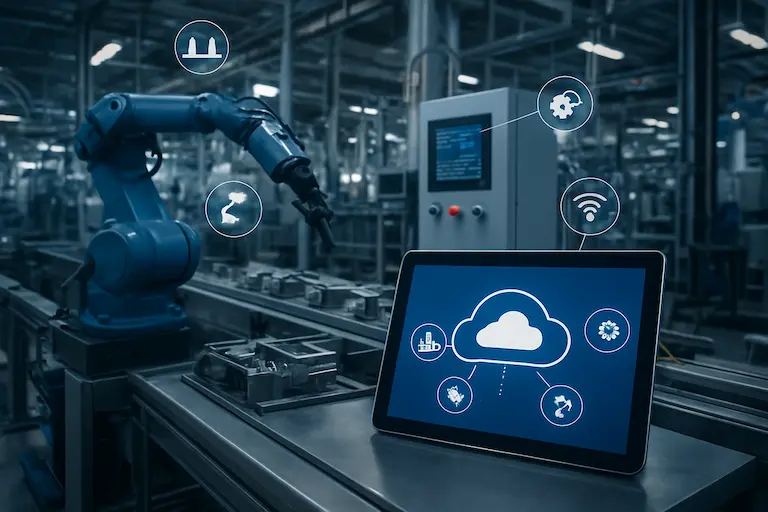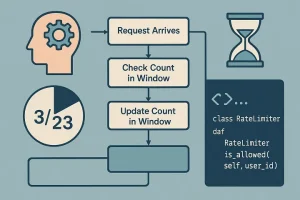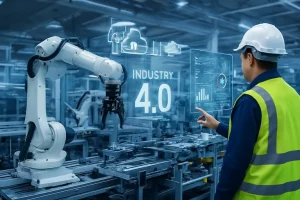Industrial IoT Market Forecast 2025–2030: Unlocking the Future of Connectivity
The Industrial IoT (Internet of Things) market is poised for significant growth and transformation from 2025 to 2030. As digital connectivity continues to advance across industrial sectors, businesses are increasingly leveraging IoT technologies to optimize operations, enhance productivity, and drive innovation. This forecast period promises to be pivotal, with emerging trends and technological advancements shaping the future landscape of industrial automation and smart manufacturing.
Understanding the Industrial IoT Market
Industrial IoT refers to the use of interconnected sensors, devices, and machines in industrial environments such as manufacturing plants, supply chains, energy grids, and transportation networks. Unlike consumer IoT, which focuses on smart homes or wearables, Industrial IoT targets the enhancement of operational efficiency, predictive maintenance, asset tracking, and real-time data analytics in heavy industries.
The global Industrial IoT market, valued at several billion dollars today, is expected to experience rapid expansion due to the growing adoption of Industry 4.0 principles, artificial intelligence, and cloud computing integration. Enterprises are keen on exploiting IoT’s potential to reduce downtime, optimize resource management, and improve safety standards.
Key Drivers Fueling Industrial IoT Market Growth
1. Advanced Manufacturing and Industry 4.0 Initiatives
Industry 4.0 has become a cornerstone for modern manufacturing systems worldwide. Smart factories equipped with IoT-enabled machinery can communicate seamlessly, enabling automated decision-making and adaptive production lines. This level of integration helps industries reduce costs and increase flexibility, which is crucial in a competitive global market.
2. Rising Demand for Predictive Maintenance
One of the standout benefits of IoT in industrial settings is predictive maintenance. IoT sensors collect real-time data on equipment conditions, allowing companies to predict failures before they occur. This proactive approach not only minimizes unexpected downtime but also extends the lifespan of valuable machinery, saving millions in repair and replacement costs.
3. Growth in Connected Devices
The surge in connected devices across industrial domains dramatically expands data generation capabilities. High-speed networks such as 5G and low-power wide-area networks (LPWAN) support more reliable and faster connectivity options, enabling a wider range of IoT-enabled assets to communicate efficiently.
Challenges and Opportunities in the Industrial IoT Market
While the Industrial IoT market forecast looks promising, some challenges could influence its trajectory through 2030.
-
Security Concerns: As industrial environments become more interconnected, cybersecurity risks also escalate. Protecting sensitive industrial data and ensuring system integrity remain top priorities for enterprises adopting IoT.
-
Standardization Issues: The diversity of IoT devices and platforms requires consistent standards for interoperability. Fragmented protocols can impede seamless communication between different systems, slowing down adoption rates.
Despite these hurdles, the opportunities for innovation are vast. The convergence of IoT with fields such as artificial intelligence (AI) and machine learning (ML) will enable smarter analytics, automated quality control, and adaptive manufacturing processes in ways previously unimaginable.
Market Segmentation and Regional Insights
The Industrial IoT market can be segmented based on component types (hardware, software, connectivity), end-user industries (automotive, energy, aerospace, logistics), and deployment models (on-premises, cloud-based).
Regionally, North America and Europe are expected to maintain leadership due to their technological infrastructure and strong industrial bases. However, the Asia-Pacific region is projected to witness the fastest growth driven by rapid industrialization, government initiatives promoting digital transformation, and investments in smart manufacturing hubs.
Future Trends Shaping Industrial IoT by 2030
-
Edge Computing: Moving data processing closer to the source reduces latency and bandwidth usage. This is crucial for time-sensitive industrial applications like robotics and autonomous machinery.
-
AI-Driven IoT Analytics: AI algorithms will analyze vast IoT data streams to provide actionable insights, enabling real-time decision-making and enhanced operational efficiency.
-
Sustainability and Energy Management: IoT is integral to monitoring and optimizing energy consumption, helping industries reduce their carbon footprint and comply with environmental regulations.
-
Human-Machine Collaboration: Augmented reality (AR) combined with IoT will facilitate better human-machine interaction on factory floors, improving training, maintenance, and operational processes.
Conclusion
The Industrial IoT market from 2025 to 2030 is set to redefine the way industries operate and compete in the global arena. With increasing IoT adoption, companies will benefit from improved efficiency, predictive insights, and smarter automation. While challenges such as security and standardization persist, ongoing innovations in connectivity and data analytics will unlock enormous potential for growth and transformational change.
Businesses looking to stay ahead must embrace the Industrial IoT wave, investing in scalable, secure IoT infrastructure to capitalize on the opportunities in the years ahead. The future of industrial connectivity promises not only enhanced productivity but also more sustainable and intelligent manufacturing ecosystems worldwide.




